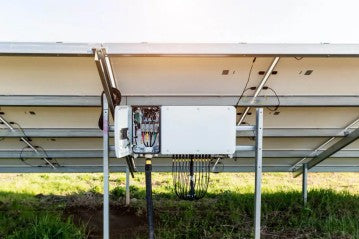
In today's world, where renewable energy is gaining popularity, many individuals are considering solar energy solutions to power their homes and devices. One common query that arises when it comes to solar power is, "How long will a deep cycle battery run a TV?" This question is essential for customers looking to purchase solar energy-related products. In this blog post, we will explore the factors that determine the running time of a TV powered by a deep cycle battery, providing you with valuable insights to make an informed decision.
Understanding Deep Cycle Batteries
Before diving into the details, let's quickly familiarize ourselves with deep cycle batteries. Deep cycle batteries are designed to provide a steady and reliable flow of power over an extended period. Unlike regular car batteries, which are intended for short bursts of energy, deep cycle batteries can withstand discharging up to 80% without causing damage. These batteries are commonly used in solar power systems, recreational vehicles (RVs), boats, and other off-grid applications.
Factors Affecting TV Runtime
Several factors influence the duration a deep cycle battery can power a TV. Let's explore the most significant ones:
1. Battery Capacity:
The capacity of a deep cycle battery is measured in ampere-hours (Ah) and indicates the amount of charge the battery can hold. A higher capacity battery will generally provide more extended running time for your TV. For instance, if you have a deep cycle battery with a capacity of 100Ah, it can theoretically deliver 100 amps of power for one hour or 1 amp of power for 100 hours. However, it's important to note that real-world conditions and other factors can affect this estimation.
2. TV Power Consumption:
The power consumption of your TV plays a crucial role in determining how long your deep cycle battery can run it. TVs come in various sizes and types, ranging from energy-efficient LED models to power-hungry plasma screens. The power consumption is typically specified in watts (W) and can usually be found on the TV's label or in the user manual. To estimate the TV's power usage, you can use an electricity usage monitor or refer to the manufacturer's specifications.
3. Inverter Efficiency:
To power a TV using a deep cycle battery, you'll need an inverter, which converts the battery's DC (direct current) power into AC (alternating current) power that the TV can use. It's essential to consider the efficiency of the inverter, as some energy is lost during the conversion process. High-quality inverters generally have higher efficiency ratings, meaning less power is wasted, and more power reaches your TV. When selecting an inverter, aim for one with an efficiency rating of at least 90% for optimal performance.
Calculating TV Runtime
Now that we understand the key factors involved, let's calculate the approximate TV runtime using a deep cycle battery. Suppose you have a 100Ah deep cycle battery, and your TV consumes 100W of power. Additionally, let's assume your inverter has an efficiency rating of 90%.
To calculate the runtime, we use the following formula:
Runtime (in hours) = (Battery Capacity × Battery Voltage × Inverter Efficiency) ÷ TV Power Consumption
Considering a typical deep cycle battery voltage of 12V, let's calculate the runtime:
Runtime = (100Ah × 12V × 0.9) ÷ 100W
Runtime ≈ 10.8 hours
This calculation suggests that, in ideal conditions, a 100Ah deep cycle battery can power a TV consuming 100W for approximately 10.8 hours. However, it's important to note that real-world conditions, such as battery age, temperature, and battery chemistry, can affect the actual runtime.
Optimizing TV Runtime
To maximize the runtime of your TV powered by a deep cycle battery, consider implementing the following tips:
1. Choose an Energy-Efficient TV: Opt for an energy-efficient TV model with lower power consumption. LED TVs are generally more power-efficient compared to plasma or LCD models.
2. Minimize Standby Power: Many TVs consume power even when they're in standby mode. To minimize energy wastage, ensure that your TV is completely powered off when not in use.
3. Battery Capacity: Invest in a deep cycle battery with a higher capacity to increase the runtime of your TV. However, keep in mind that larger capacity batteries are typically larger and heavier.
4. Optimize Inverter Efficiency: Select a high-quality inverter with a higher efficiency rating to reduce power losses during the conversion process. This will ensure that more power reaches your TV, maximizing the runtime.
Conclusion
Understanding the factors that determine how long a deep cycle battery can run a TV is crucial for customers looking to harness solar energy and make informed decisions. By considering the battery capacity, TV power consumption, and inverter efficiency, you can estimate the approximate runtime of your TV. Additionally, implementing tips such as choosing an energy-efficient TV and optimizing inverter efficiency can further extend your TV's runtime. Remember that real-world conditions may vary, so it's essential to consider these calculations as estimates. With the right setup and careful planning, a deep cycle battery can provide reliable power to enjoy your favorite TV shows and movies even in off-grid situations.
Related articles: What's the Difference Between a Deep Cycle Battery and a Regular Battery?


0 comments